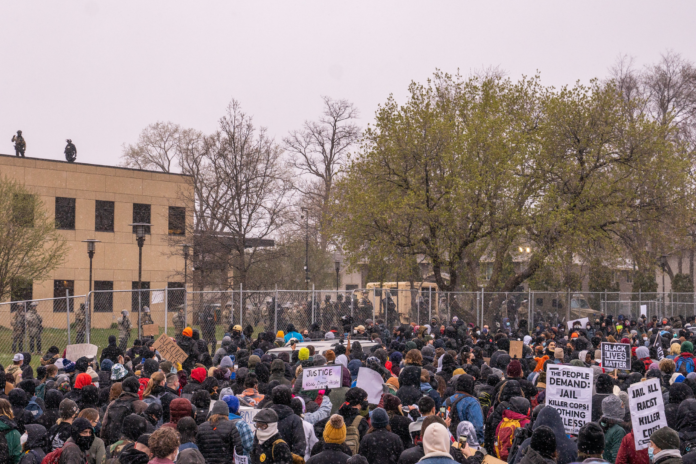Massive protests have not resulted in massive transmission of the coronavirus.
Untold thousands have turned out to protest the Minneapolis and Brooklyn Center police departments over the last year. These demonstrators often form tight ranks, neglecting the state recommended use of masks and social distance. However, despite the large gatherings and wanton disregard for what officials recommend, a trend has been consistent: these gatherings do not spread COVID-19 in a significant way.
Daunte Wright was killed by a Brooklyn Center police officer who apparently fired her service pistol at him thinking it was a taser on April 11. Protesters immediately took to the streets and stayed there every day and night through April 20.
After 10 days of demonstrations involving thousands of protesters, national guardsmen and first responders, state officials identified only 22 related COVID cases, per Fox 9. This count includes 11 police officers and 11 protesters.
This seemingly low transmission rate is not unique. As mainstream Minnesota media is keen to highlight, only 1.5% of last year’s George Floyd protesters contracted the virus.
The Star Tribune even reported in June 2020 that “a surge in COVID-19 cases following the mass protests and riots over the May 25 police killing of George Floyd has not yet materialized, despite aggressive testing.”
This phenomenon isn’t limited to Minneapolis either. Hotbeds of both coronavirus and protesting like Seattle and New York both noted a decline in cases around the time that the most well-attended demonstrations occurred.
Meanwhile, while protesters are permitted to take to the streets with impunity, no such freedoms are afforded Minnesotans who want to hold other outdoor events.
According to the state’s current rules and executive orders, “outdoor Recreation Activities and Facilities” are capped at 50 people — provided that “at least 6 feet of separation between households” is maintained. Campers are also not allowed to congregate in groups of over 15, and are not allowed to form any groups that involve more than three households.
However, the rules say that “outdoor events and entertainment” venues are allowed to host up to 10,000 people. No explanation is provided as to why there are such vastly different group size allowances across activities. It is unclear what scientific metrics guided this mandate.

















